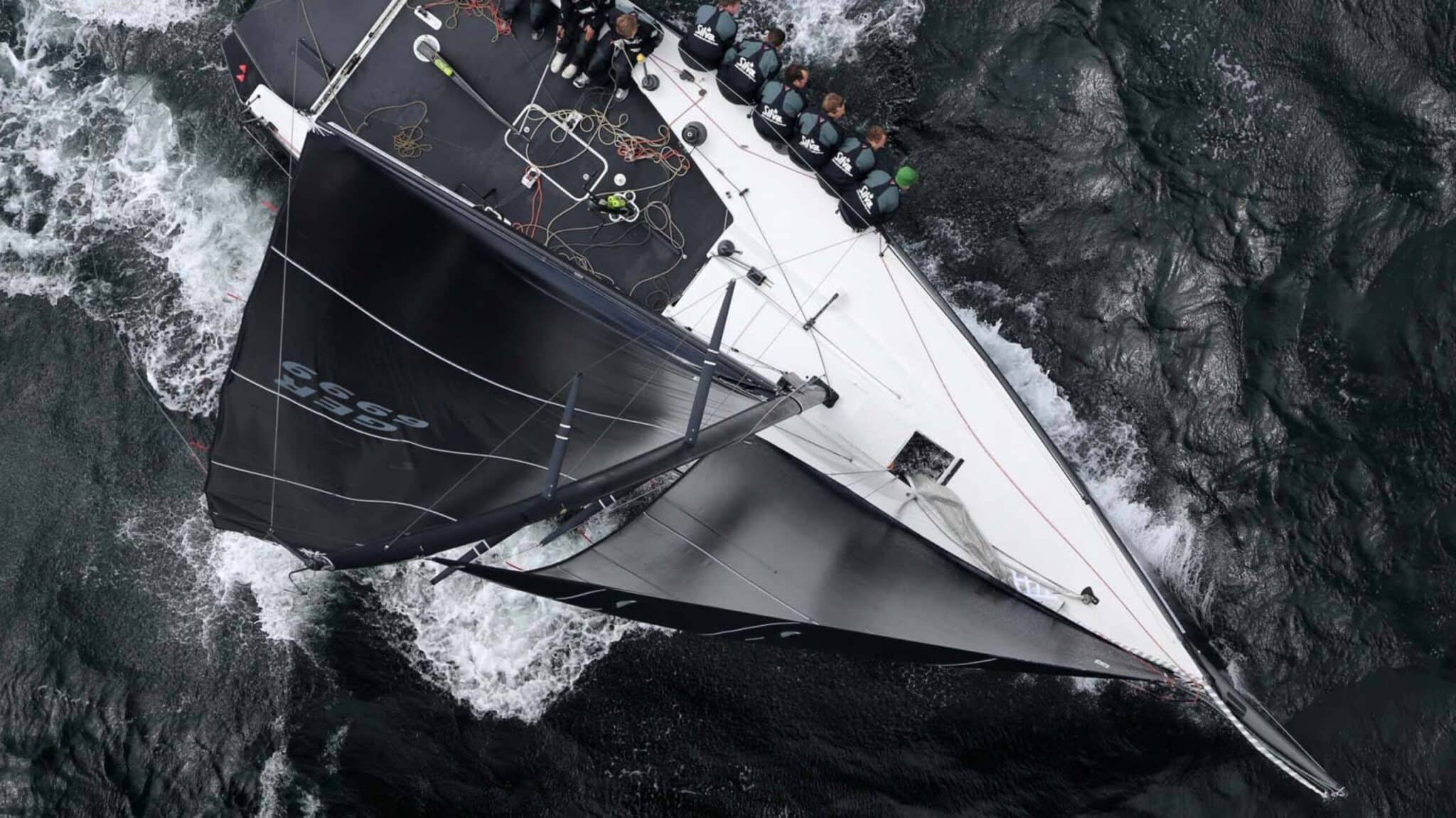
Racing Headsails: Titanium

UK Sailmakers pioneered load-path sails with the Tape-Drive® construction method three decades ago. In load-path sails, the aerodynamic loads are transferred from the sail’s cloth (usually a Mylar film or skin) and seams to bundles of high strength yarns that run continuously between the corners of the sail.
UK Sailmakers’ Titanium® load-path sails are made with a grid of continuous carbon yarns running unbroken between the three corners of the sail; those yarns are laminated between two layers of 3D-shaped PET film layers. The PET layers are the epidermis of the Titanium sail that protect and hold all the layers together.
In the Titanium construction process, the load-path yarns are laid dry-without glue to reduce weight and to prevent the carbon yarns from becoming brittle. Further, by not coating the yarns with glue they are lighter, remain more flexible, and make the sails more durable (by 15-30%). The results: happier foredeck teams and more satisfied owners who are not replacing their misshaped and broken sails as often.

Lite Skin or taffeta – your choice
Until recently, Titanium sails’ PET film was unprotected on their exterior surfaces. This made them susceptible to damage caused by tacking plus damage caused in normal sail handling. Today’s Titanium sails can be ordered with PET films that have their outer sides covered with a layer of either Lite Skin® or taffeta. In either case, by adding these protective coverings, a Titanium sail will enjoy an extended peak performance life without a noticeable increase in the sail’s weight.


Lite Skin, is a thin, lightweight sheet of random, non-woven, polyester filaments applied to what will be the outer sides of the sail giving the sail a mat-black or dark grey appearance. Lite Skin is a proprietary product of Dimension-Polyant Sailcloth. Lite Skin comes in two weights: 10×10 and a lighter 5×5, which is half the weight of the first version of Lite Skin (the 10×10 style).
Taffeta applied to Titanium laminates is a lightweight, finely woven polyester cloth. Like Lite Skin, this taffeta layer will better protect your sail and extend its competitive life. Taffeta is slightly heavier than Lite Skin but it also more rugged.

More about the Titanium lamination process
The PET film is key to a Titanium sail’s lamination “sandwich.” At only 1.3 micrometers thick, this material is incredibly tough. PET is most familiar for its use in plastic bottles and in some paper currencies; try tearing either of these apart and you’ll see how tough PET is. Further, sunlight and heat (up to 50°C/120°F) do nothing to PET, not even making it shrink like many similar materials.
The inner sides of the PET skins are tacky from their copolymer coating. As the yarns are applied, this stickiness holds them in place on the skin’s surface until the final lamination has been completed. The skin-yarn-skin “sandwich” is then placed onto a variable geometry thermoform “oven” in which the sail is UV and heat bonded under 1 bar of vacuum pressure to form a one-piece sail. The copolymer melts around the carbon fibers resulting in a new single-layer structure (the sail) that is substantially stronger than the sum of its parts.
Yes, there are seams in a Titanium sail, but they are there simply to shape the film layers and not to provide any structural strength. Unlike most high-tech sails in which structural yarns only run the width of an individual panel, a Titanium sail’s corner-to-corner, continuous yarns eliminate seam loads, load-induced seam distortion, wrinkles, or worse yet, seam failure. Titanium sails come out of the bag smooth and wrinkle-free and stay that way.

